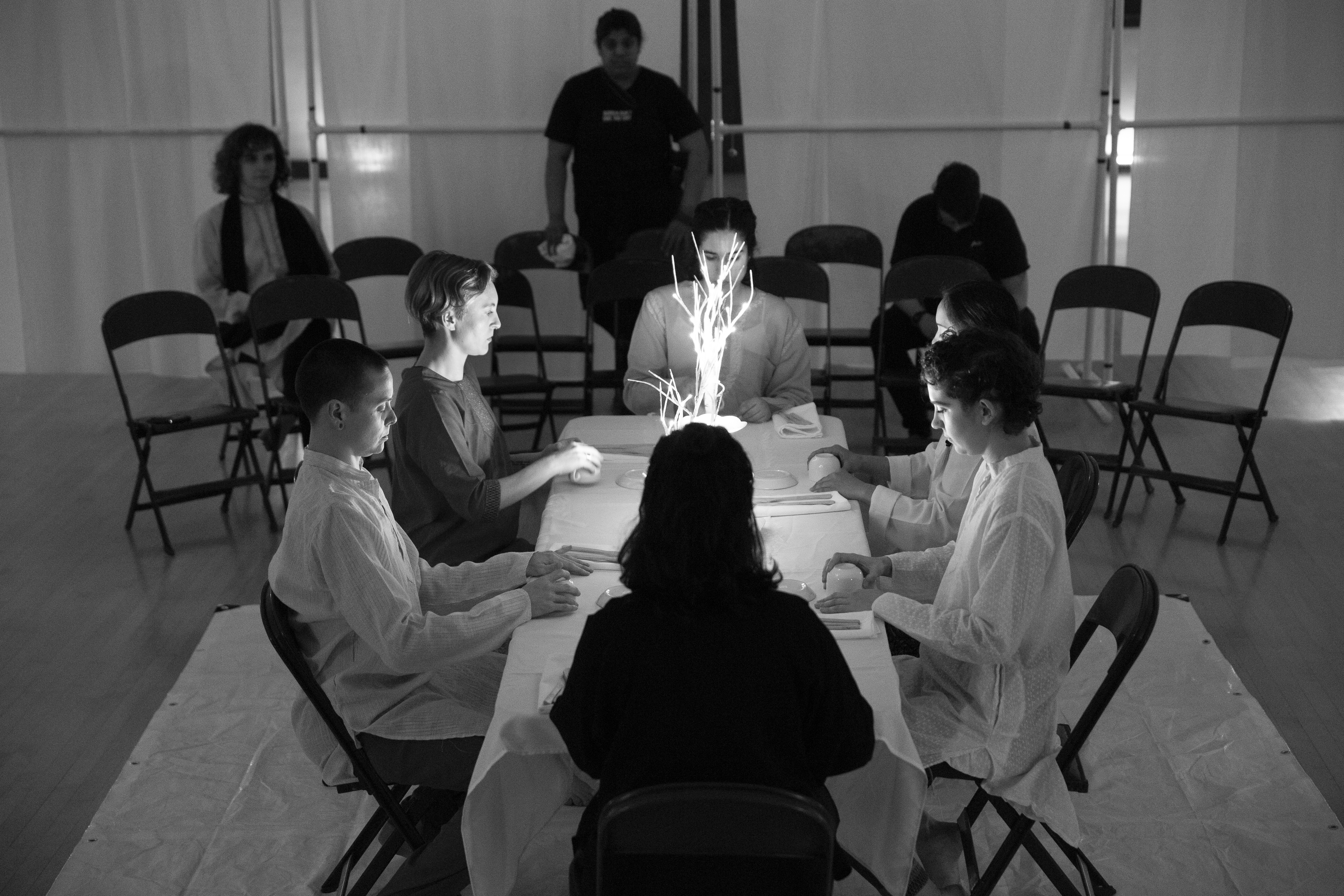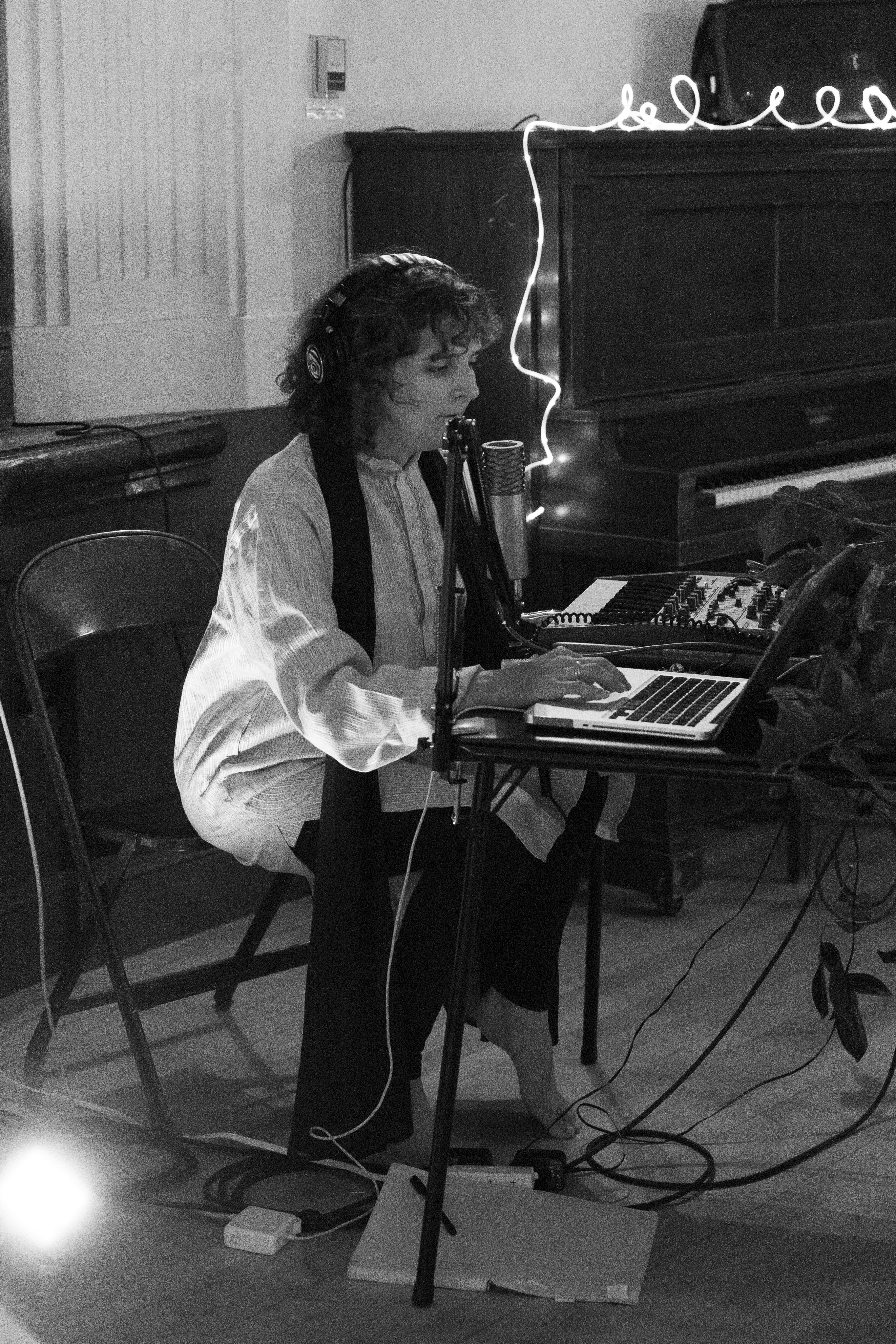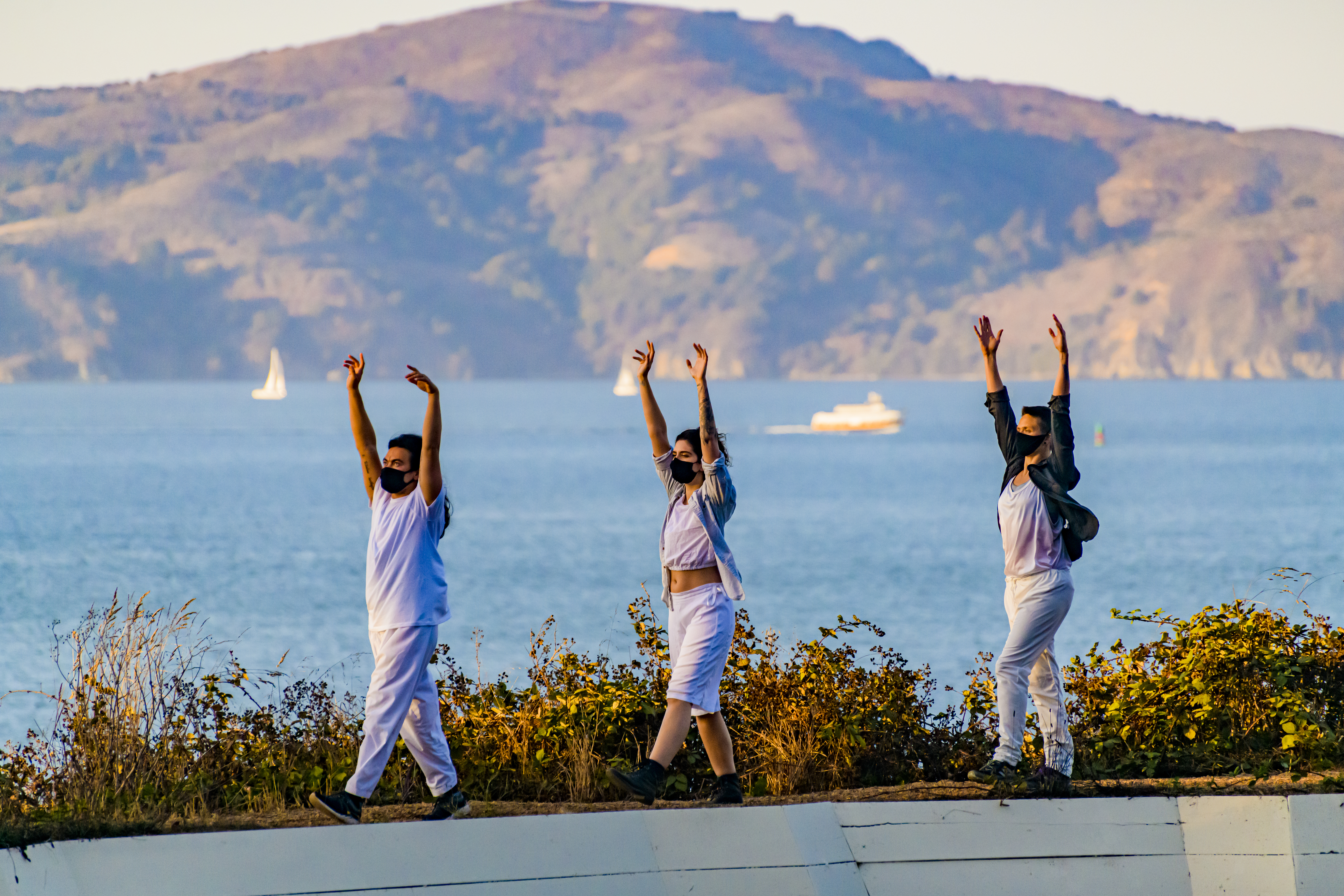Words by Maxine Flasher-Duzgunes.
“Movement and art making [can] be tools for activism,” states Bhumi Patel, Artistic Director of pateldanceworks, an intersectional artist collective operating outside traditional western dance practices and inside models of improvisation and kinesthetic processing. Patel first learned about the power of embodied research as a way of healing during her MFA at Mills College, located in the San Francisco Bay Area of California. “[The] project that I did there as part of my thesis was in particular looking at Gaga as a form…that is democratic and non-hierarchical and…taps into the sort of intrinsic knowledge that we as humans have of expressing ourselves through the body.”
Post graduation, Patel created her company with the aim of involving company members in activist-centered organizations that shared similar values, and bringing that engagement into performance, pre-show workshops, panels, and residencies. In Patel’s current and last pre-pandemic work, divisions the empire has sown, the company partnered with a women-of-color owned Indian restaurant in San Francisco called Besharam – “besharam” meaning “shameless” in Hindi. They also partnered with a women-of-color owned tea-blending company in the East Bay called Teas With Meaning, whose owner found tea to be an alternative healing practice to illness.

These partnerships have initiated further dialogues when it comes to viewing the company’s artistic works. Despite its flaws when it comes to accessibility and in the covid-era health measures, Patel believes that live performance has a role of “[co-creating] a new understanding of the world together.” It should be an immersive space for audience members to build community, “because there is an agency to that, to ask your audience to not just sit in the dark and have your feelings in your own chair and then leave with whatever feelings you have.” In the virtual space, Patel has been brainstorming how to effectively set up a “cafe” for these types of reflective experiences to occur, and democratically at that. “I think everyone is creative in their own way,” Patel says, and that the idea of expecting artistic agency from only the performers is an outdated one.
Patel’s use of movement and performance is to elicit collective understanding; to say to audiences, “this is something you should really know is going on in the world.” And in her history with embodied vocal practice, it’s about unmuting a portal for chaos, to sing and make noise that doesn’t have to be good, that doesn’t have to be for anything. Living in an urban environment often comes with this consciousness of the amount of sound you are making, but putting that social constraint away for bouts of rehearsals and workshops has been the key towards a sense of liberation. “Particularly when you talk about marginalised people, when you talk about women, when you talk about people of colour, queer and trans people, the voice becomes so imbued with a type of oppression, like being silenced, that opening the voice to full expression is really transformative,” she says.
Patel currently collaborates with vocalist and composer, Rachel Austin, one of many who has been instrumental in the company’s intersectional practices of embodied research with activism. Austin’s work learns through the lineage of Alfred Wolfsohn and Roy Hart. Wolfson experienced what we know today as Post Traumatic Stress Disorder (PTSD) whilst serving as a stretcher bearer in Germany during the Great War. After the failure of several psychiatric treatments made available at the time, he started making the sounds of the dying people he heard on the battlefield, trying to pass those sounds he heard through his body as a way of healing himself. One of one of his students, Roy Hart, went on to use this as a mode of training vocalists, and found it to increase singers’ octave range. Austin channels this practice with the company: the ability to transfer sound and emotional content from different parts of the body, all while staying incredibly present.

The company continues to work on divisions the empire has sown, which has gone through many iterations during various work-in-progress residencies, and initially started with just speaking. In this piece, Patel asks, “What does it mean to speak on stage during a work, and to speak as yourself, not as a character, which is something that is really important to me. I feel like I grew up in a lineage of being told ‘leave it at the door.’ This is a frequent thing that I heard and that I think a lot of dancers have heard, and that’s just not possible. I am a person, I am a whole person, I am not a blank piece of paper for this class to write on.” She hopes for an in-person premiere in June, and that by inviting collaborators from every corner of knowledge and experience to journey inside the creative process, they can come together for a shared vision.
“I’ve worked with folks who have a really strong ballet background, but are trying to dismantle the harm that they experienced through that. And then I’ve worked with people who’ve come from a strictly improvisational background,” Patel says. She also disagrees that performers are a vehicle for her movement language. “I’m never going to be the type of person who creates a movement form,” she says; being a collaborator is about being an individual (outside of being a dancer) and how you feel related to the thematic content of the project, or rather, don’t feel related to it. During the process of this piece, Patel has put together a public collective altar or “virtual cork board” where collaborators can submit writing, drawings, and other mediums they feel are relevant to the work, a necessary way of establishing individual ownership of ideas exchanged among multiple artists.

Patel’s work with the Bay Area Black Indigenous People of Color (BIPOC) artist collective, Dancing Around Race, has further informed her work regarding immersing the local dance ecology in advocacy, accountability and outreach, and to outline ways for organisations and institutions to be a place where BIPOC artists don’t just have to survive, but can actually thrive.
“Toni Cade Bambara says ‘the role of the artist is to make the revolution irresistible,’” Patel says, in reference to Dr. Cornel West’s theory that marginalised peoples are the ones who provide a lens through which all artists can imagine their social movements. “And that feels like work,” she continues, “especially because I exist at a particular intersection of identities, being queer, being brown, being the child of immigrants, having an invisible disability. It would be so easy to be just like ‘I’m marginalised, I’m excluded from this system, I have to find another system.’ But I feel like I’ve come to know so many people in our community by grieving with them, by grieving the system that has failed so many of us. And then, from grieving, creating ways to build solidarity, and to build the world that we want to live in.”
Patel states that it is through collective wisdom that a certain amount of care and healing can help us reimagine and reconstruct a more equitable future. Her work emphasises the importance of dialogue, to the point where language reaches tangible action. She loves every January when she sees colour images of Dr. Reverend Martin Luther King Jr. circulating on social media, a reminder that the black-and-white photos of the Civil Rights era are by no means forgotten, and in fact are more relevant today than ever before.
Header image: Douglas Calalo Berry. Performers: Bhumi B. Patel, Jordan Wanderer.
